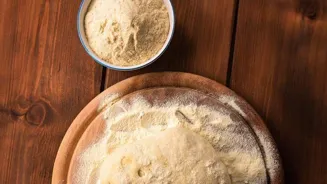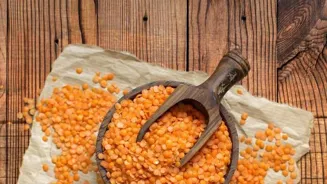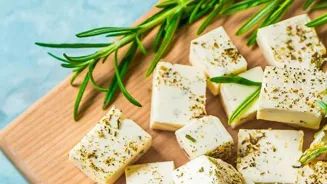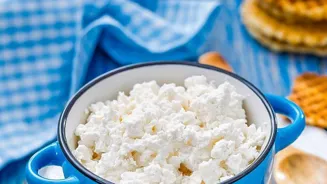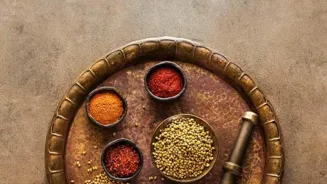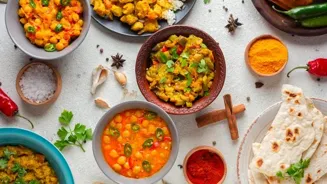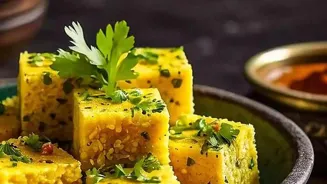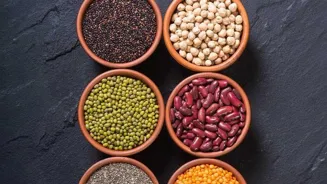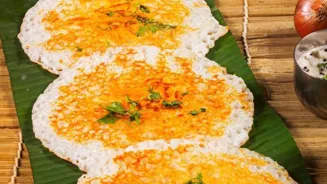Unveiling the Art of Perfect Indian Naan: A Culinary Journey Awaits! Dive into the secrets of creating restaurant-quality naan at home
Naan, that oh-so-soft and pillowy flatbread, a quintessential part
of Indian cuisine, gracing thalis and accompanying flavorful curries. Ever wondered how restaurants manage to get that perfect char, that airy texture, and that melt-in-your-mouth feel?
The secret, dear reader, isn't some guarded chef's secret, but a combination of good ingredients, correct technique, and a whole lot of love. Today, we're demystifying the art of naan-making, bringing the restaurant-quality goodness right into your home kitchen.
Get ready to roll up your sleeves and embark on a culinary journey to create the perfect naan, one that will impress your family and friends, and most importantly, satisfy your own taste buds.
The key to perfect naan: well-balanced dough, proper kneading, and patience for optimal rise
The foundation of any good naan lies in its dough. Think of it as the canvas upon which we'll paint the masterpiece that is a perfectly cooked, delectable naan.
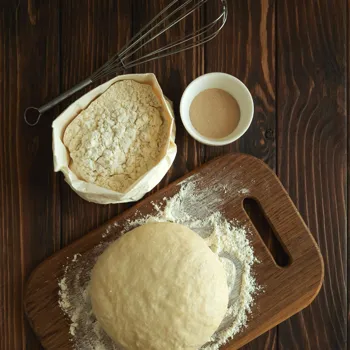
The key ingredients are simple: flour (maida or all-purpose flour being the most common), yeast (either active dry or instant), sugar (just a touch to feed the yeast), salt (to balance the flavors), yogurt (for that signature softness), and a touch of oil or ghee (for richness and pliability).
The proportion of these ingredients is crucial. Too much flour will result in a hard, dry naan, while too much liquid will make the dough sticky and unmanageable. The kneading process is equally important.
Don't just mix the ingredients together; knead the dough for a good 8-10 minutes until it becomes smooth and elastic. This develops the gluten, which gives the naan its characteristic chewiness.
Once kneaded, let the dough rest in a warm place for at least an hour, or even better, a couple of hours. This allows the yeast to work its magic, creating those air pockets that make the naan so light and fluffy. Remember, patience is key!
A well-rested dough is a happy dough, and a happy dough makes for a delicious naan.
Cook naan in a hot pan for a rustic, homemade look
Now, let's talk about the cooking process, the moment where the magic truly happens. Traditionally, naan is cooked in a tandoor, a cylindrical clay oven heated to very high temperatures.
The intense heat quickly cooks the naan, creating those characteristic charred spots and giving it a unique smoky flavor. But don't despair if you don't have a tandoor in your backyard! You can achieve excellent results using a cast-iron skillet or even a regular non-stick pan.
The trick is to get the pan very hot before you start cooking. Preheat it over medium-high heat until a drop of water sizzles and evaporates almost immediately. Once the pan is hot enough, gently stretch a ball of dough into an oval shape, about ¼ inch thick.
You can use a rolling pin, but gently stretching it with your hands will give it a more rustic, homemade look. Before placing the naan on the hot pan, brush one side with water. This helps the naan to stick to the pan and puff up beautifully.
Place the water-side down on the hot pan and let it cook for a couple of minutes, or until bubbles start to form on the surface.
Cook naan directly over flame for charred finish, serve with Indian curry or dal
Once bubbles start to appear, it's time to flip the pan over and cook the naan directly over the flame. This is where you get that beautiful char that is characteristic of restaurant-style naan.
If you are using an electric stove, you can skip this step and simply cook the naan on the hot pan until it is golden brown and cooked through. Be careful not to burn the naan! Keep a close eye on it and adjust the heat as needed.
Once the naan is cooked, remove it from the pan and brush it generously with melted butter or ghee. This adds richness and flavor, and also helps to keep the naan soft and pliable. Serve immediately with your favorite Indian curry or dal.
Some popular choices include butter chicken, palak paneer, and dal makhani. You can also enjoy naan on its own, with a dollop of yogurt or raita.
Experiment with flavors and techniques to master the art of naan-making
Experimentation is the soul of cooking! While this guide provides a solid foundation, don't be afraid to experiment with different flavors and variations. You can add chopped garlic, cilantro, or even chili flakes to the dough for an extra kick.
Stuffing the naan with paneer (Indian cheese), potatoes, or spiced vegetables is another popular option. Try different types of flour, such as whole wheat flour or a blend of different flours, to create naan with a unique texture and flavor. The possibilities are endless!
The more you practice, the better you'll get at making naan. Don't be discouraged if your first few attempts aren't perfect. Just keep trying, and you'll eventually master the art of naan-making. And remember, the most important ingredient is love. When you cook with love, everything tastes better!
Discover the secrets to perfect Indian naan at home
So, there you have it – the secrets behind perfect Indian naan revealed! With a little practice and patience, you can create restaurant-quality naan right in your own home. So, gather your ingredients, roll up your sleeves, and get ready to embark on a culinary adventure.
The aroma of freshly baked naan wafting through your kitchen is sure to bring a smile to your face and delight your senses. Happy baking! Remember to share your naan-making triumphs (and even your learning experiences!) with friends and family!
Food is best enjoyed when it's shared, and the joy of creating something delicious for others is truly unparalleled. Go forth and bake those perfect naans!
AI Generated Content. Glance/InMobi shall have no liability for the content